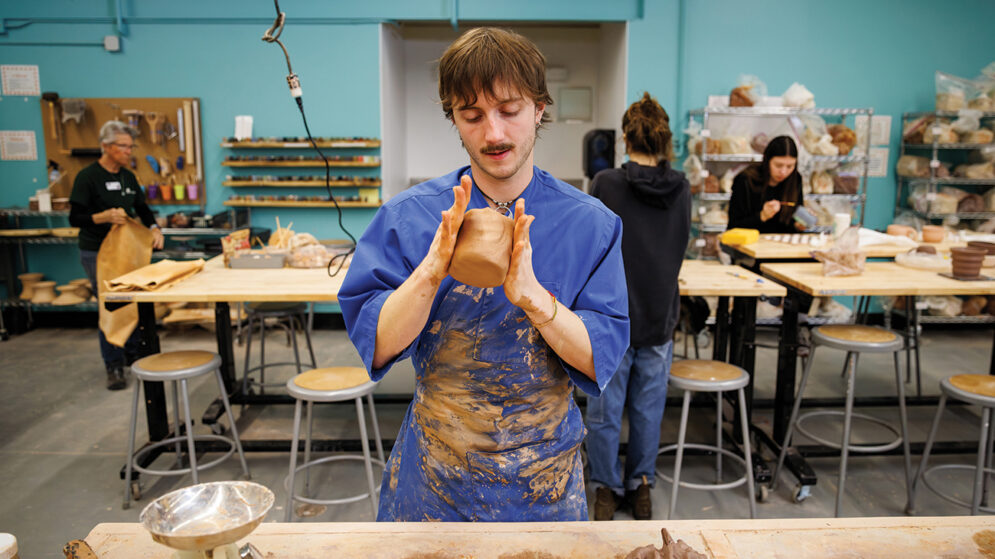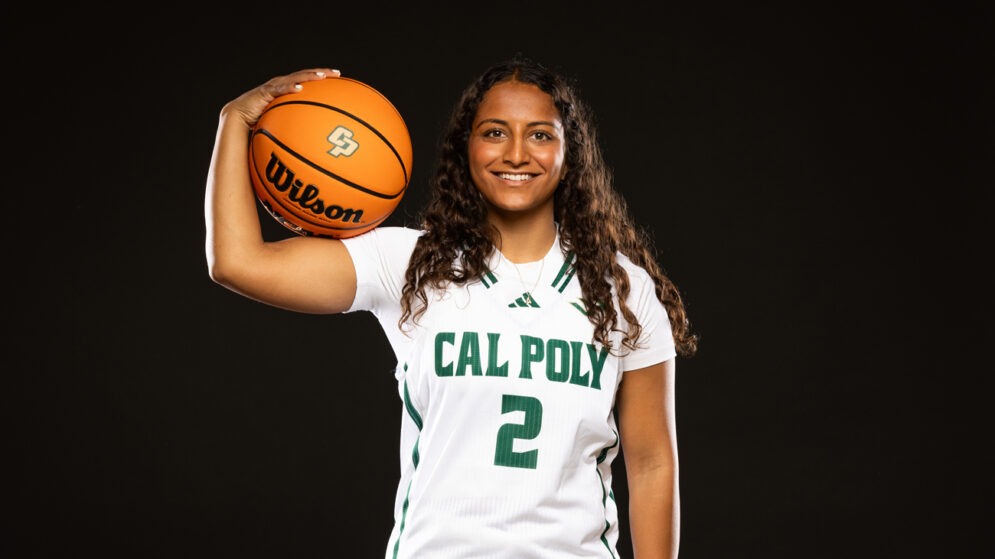Course Description
Kitchen Consequential
A food science course challenges students to learn how to cook for a variety of diets and budgets — and make it all taste good.
By Gabby Ferreira // Photos by Joe Johnston
Share this article:
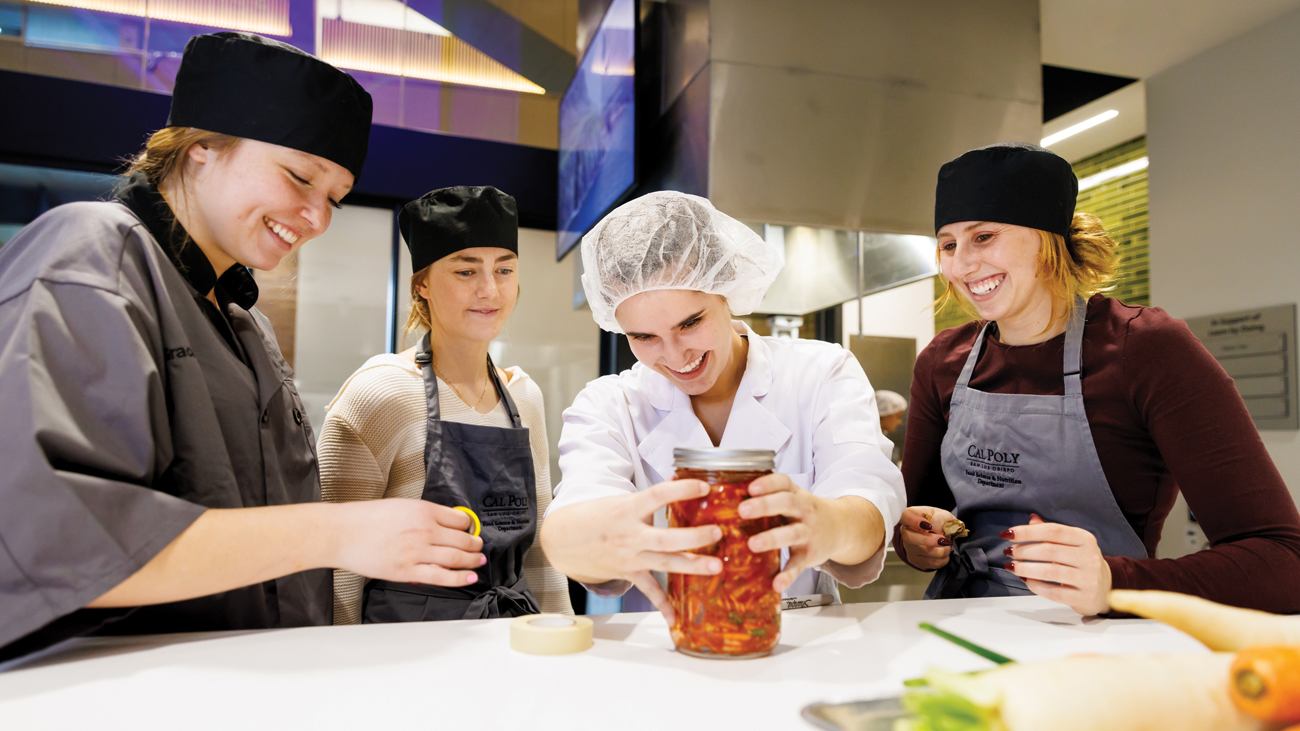
The culinary lab inside the Frost Center is abuzz with activity. Students ditch their backpacks and don hairnets as their instructor, Verena Alexander, prepares the young chefs for today’s challenge: making kimchi.
A pile of fresh vegetables and gochugaru — Korean chili powder — sit on a gleaming stainless-steel table. Once the students have their instructions, they get to work, taking the vegetables and chili powder to their respective stations and beginning to chop everything up.
The kimchi lab is part of FSN 321: Contemporary Issues in Food Choice and Preparation. Throughout the course, students learn about cooking for different types of diets and budgets, as well as the role of different cultures in informing how people really eat.
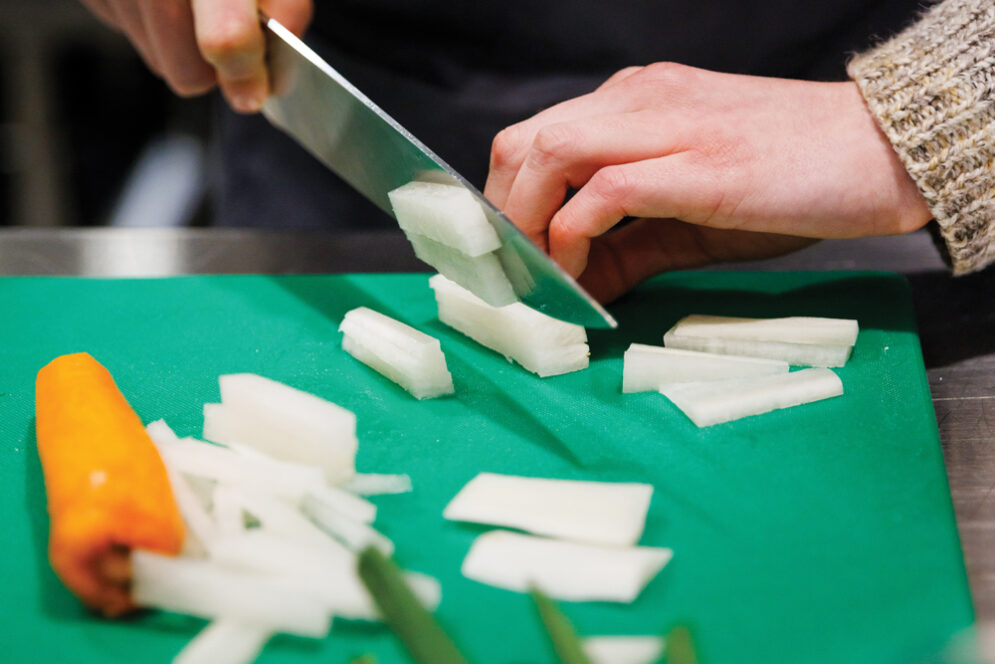
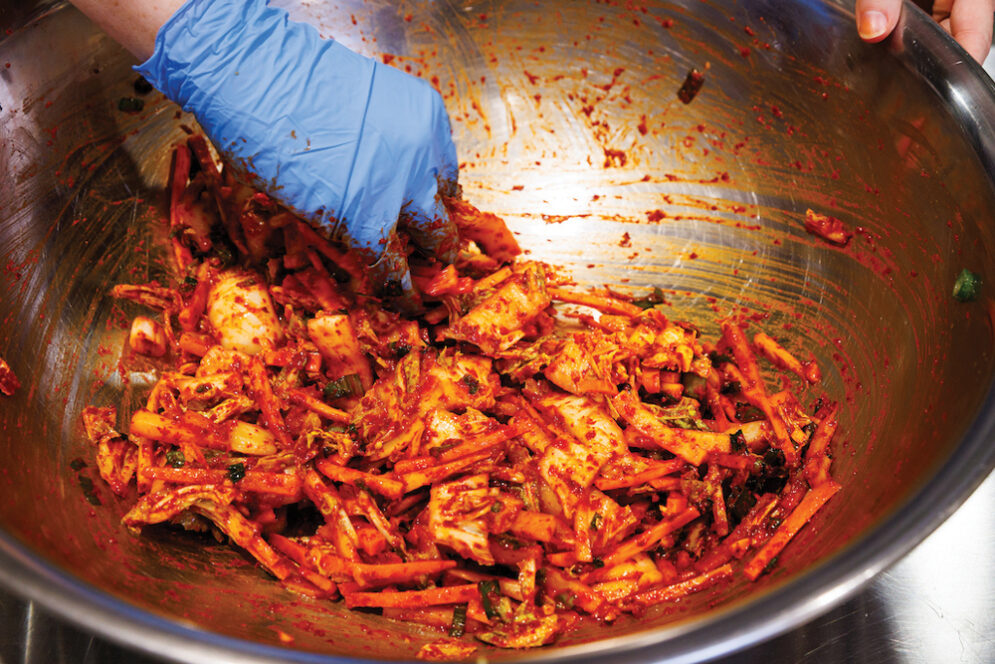
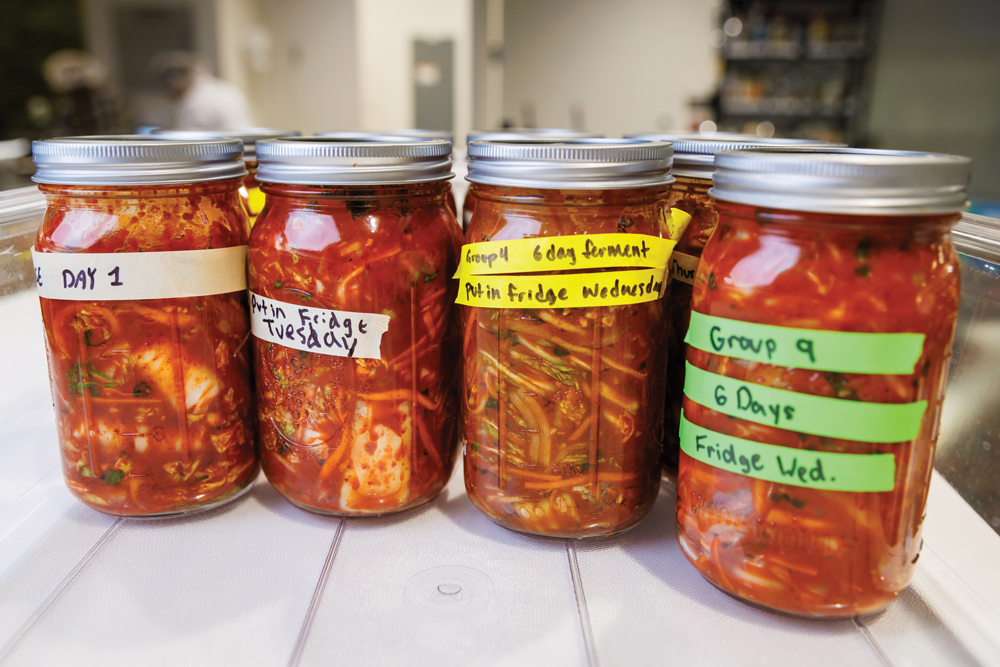
First photo: A student chops daikon radish for kimchi.Second photo: Students mix the vegetables and spices together during
one of the final steps of the process. Third photo: The final result: Jars of kimchi are labeled and stored away to test fermentation.
“Food choices are complex. It is not just, ‘What am I going to eat right now?’” Alexander said. “You have different influential factors like financial situations, taste preference, health reasons and cultural reasons that inform what someone will choose to eat.”
Recipe modifications make up a large portion of the class’s discussions. When they develop recipes, they have to think about people on therapeutic diets, which include people with heart disease, kidney disease, high cholesterol and other health issues.
“If we need to decrease the amount of salt, like we need to for cardiac patients, how do we rebuild that flavor in our dish? What happens when we modify a recipe, and how do we rebalance that flavor?” Alexander said.
Each week, students attend a lecture and then head into the culinary lab to put their knowledge to work. To prepare for the kimchi lab, Alexander gave a lecture covering probiotics, prebiotics and fermented foods.
After the class prepares a dish in the lab, they then dig into sensory evaluation, where they try each other’s dishes and offer feedback on texture, flavor and visual appeal.
“This type of class teaches us what dietary interventions look like on the plate. It helps us actually taste and understand what we would recommend to people."
Verena Alexander, Food Science and Nutrition Lecturer
“As a registered dietitian, I have clinical experience and food service experience. Our students get the same training,” Alexander said.
A large component of the class is about food insecurity — an issue that affects millions of Americans. For the class’s final project, students take on a case study and develop a seven-day meal plan that fits both federal dietary guidelines and the budget for Cal Fresh, the state’s food stamp program. They create recipe books, and at the end of the quarter they make one of the recipes to share with the class.
“They might have a case study for someone who’s trying to be heart healthy, or who has celiac disease, or for a family of five with some picky eaters that they have to work around,” Alexander said.
For second-year nutrition student Olive Baecker, the class is directly applicable to an internship they recently started with Cal Fresh.
“It’s cool to apply this knowledge,” Baecker said. “This is a really experimental lab. You’re able to play.”
It’s a sentiment echoed by fourth-year applied nutrition major Isabel Ertac.
“I really like cooking, and I’ve made a lot of new things in this class, like chutney and kimchi,” Ertac said. Her favorite part of the class so far has been the week that they learned how to prepare herbs and spices to create spice blends, like garam masala, something she had never done before. “I’m learning a lot, and it’s great getting to experiment and try new things in a structured environment.”
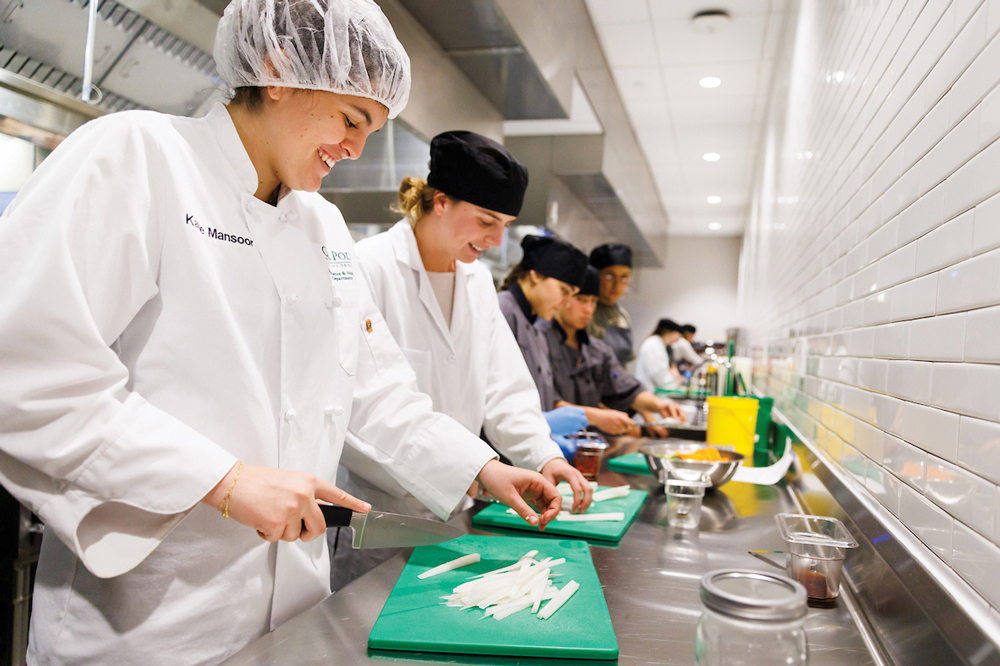
Food science students prepare ingredients in the Oreggia Family Foundation Culinary Lab.
Alexander said that this class prepares students to thrive in the field, where food choices aren’t always clear-cut.
“This type of class teaches us what dietary interventions look like on the plate. It helps us actually taste and understand what we would recommend to people. It also teaches us to understand the complexity of food choice, and being able to meet our clients where they need to be met, and to be empathetic in their health journey,” Alexander said. “It’s really valuable in that regard.”
Your Next Read
Drop by the ASI Craft Center, where busy students can engage their creative side.
As senior point guard Annika Shah scored her 1,000th point, she cemented her legacy as one of the program’s most resilient leaders.


